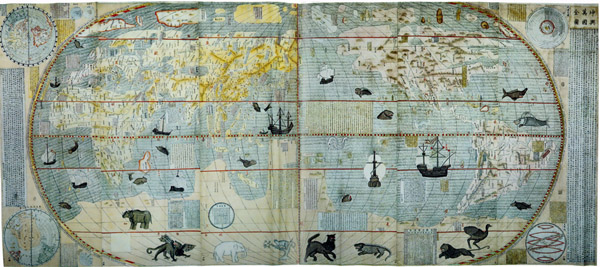 |
|
The world map painted by Matteo Ricci during his stay in China. [Photo provided to China Daily] |
The Jesuit missionary Matteo Ricci may have had grand designs to convert China to Christianity, but things turned out to be infinitely less simple
Zhang Xiping opened a map in front of him. Against the pale blue background were blocks of whitish yellow, depicting land mass (or the continents, if you like). Mountains were suggested by dabs of brown, and there were black icons representing ships on the high seas, and depictions of animals, many of those on the lower part of the map having a grotesque appearance.
The ships bring to mind the Santa Maria of Christopher Columbus, but the animals, one featuring spiky wings like those of a pterosaur, seem to be a product of the cartographer's imagination.
"A map is an expression of a world view," says Zhang, a scholar at the Beijing Foreign Studies University who specializes in cross-cultural exchanges between China and the West.
"By drawing up this map, the author, the Italian Jesuit missionary-cum-adventurer Matteo Ricci, had expected to put China - and members of its elite society - into perspective."
If that is the case, then the Italian, who traveled to China around 1582 and is believed to have been the first Jesuit missionary to set foot in Beijing, in around 1601, succeeded to a certain extent.